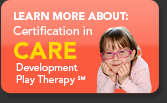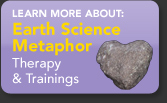The Magic Rainbow Hug© is based upon the principles of the Kinesthetic Storytelling™ (Drawing by Grace, age 8 and Ben, age 10) Certification Available Mental health professionals may obtain certification in CARE Developmental Play Therapy. Those who earn certification as a CARE Developmental Play Therapist are then eligible to become a Certified Practitioner of Kinesthetic Storytelling™ The next CARE Developmental Play Therapy Intensive Workshop is May 14th to 17th, 2013 In Boynton Beach, Florida The story of The Magic Rainbow Hug© has evolved over two decades in my play therapy practice and is based upon a therapeutic approach I developed called Kinesthetic Storytelling™. Simply, the technique incorporates joyful touch integrated along with metaphoric storytelling or what I call “Kinesthetic Storytelling™”. Children dealing with a variety of problems have been helped to overcome their fears and anxieties as I guided the adults in their lives to integrate Kinesthetic Storytelling™ into daily practice. As a result, symptoms in children decreased, and simultaneously the adult-child joyful connection strengthened. I wrote The Magic Rainbow Hug© as I was inspired by the number of telephone calls and emails I received from parents and practitioners sharing with me their wonderful successes of how children were experiencing Kinesthetic Storytelling™ in daily practice. I was often asked for clarification regarding a certain hand movement. For instance, “Janet, how exactly does the thunder go again? Or, “What is the hand movement again for the hail?” I have learned that the technique of Kinesthetic Storytelling™ is more than just a metaphoric story. It is also about skill building. In practice, I personalize Kinesthetic Storytelling™ to meet the therapeutic needs of children, and The Magic Rainbow Hug© presents an adapted version with added storyline and extra characters. Theoretical Underpinnings The Magic Rainbow Hug© is based upon three very distinct theoretical paradigms: Ericksonian, Developmental Play Therapy and Ecopsychology. The Magic Rainbow Hug© is a metaphorical story grounded in theory as set forth by psychiatrist, Milton Erickson (Ericksonian) and Play Therapist, Joyce Mills, PhD (StoryPlay®). Metaphoric stories reach a child’s problem at a deeper level of consciousness. In this story, the weather is used to parallel life’s problems and solutions, and the rainbow ~ even since ancient times ~ symbolizes hope and renewal. Indirect positive suggestions act to reprogram a child’s internal perceptions of self and the world around them. Meaning their outer life experience such as abuse, bullying, divorce, domestic violence, foster care, illness, hospitalization, loss due to death (human or pets), loss due to natural disasters (earthquakes, fire, hurricanes, tornados, tsunamis), may not change, but how they feel and respond to the problem can change. Herein is the HOPE. Developmental Play Therapy (DPT) was developed through the work and research of psychologist, Viola Brody, PhD. DPT is an attachment based therapy that intervenes at the level of first-play. First-play activities are early touch and pleasurable games that one might observe between a mother and a young child, for example, “patty cake,” or “peek-a-boo”. Essential to the DPT model is its emphasis on touch as a core principle effecting change in a child. It is touch that ultimately produces the condition for a child to develop an “inner self,” a basic human need for growth. Dr. Brody addresses the significance of touch by emphasizing that contact between a child and adult needs to be joyful. She writes, “It is the pleasure element in this touching relationship, with an adult who is fully present, that helps a child to always have a solid sense of his body—a ‘home’ or ‘centering place’ within himself.” As global culture becomes more urbanized and technology oriented, practitioners are increasingly searching for strategies to optimize the beneficial aspects of nature into a child’s life. The field of Ecopychology believes that contact with nature is restorative. Weather is at the heart of the story and inspires connection to the evolving cycle of our natural world. The young diarist, Ann Frank believed that nature is the “best remedy” for healing and wrote, so wisely, “I firmly believe that nature brings solace in all troubles.” Thus, you are encouraged, when possible, to read and practice the story outdoors ~ in nature. (See Dr. Courtney’s Chapter publication that highlights a case presentation which includes Kinesthetic Storytelling™™ in a practice session with a child diagnosed with autism spectrum disorder. Full reference: Courtney, J.A. (2012). Touching Autism through Developmental Play Therapy. In Gallo-Lopez, L. & L.C. Rubin (Eds.). Play-based interventions for children and adolescents with autism spectrum disorders (pp. 137-157). New York, NY: Routledge.) Practitioner Touch Considerations Our current day society is highly sensitized to the issues of touching children. The following is a list of practitioner clinical, professional and ethical recommendations regarding touch:
(For further considerations on touch, see also Courtney (2012) Chapter: Touching Autism through Developmental Play Therapy and the Association for Play Therapy (APT) website at: http://www.a4pt.org/ps.programspublications.cfm for Paper on Touch)
|
Dr. Courtney is able to provide consultations and therapy via telephone either locally or long distance through appointment only. Contact Dr. Courtney for further information.


